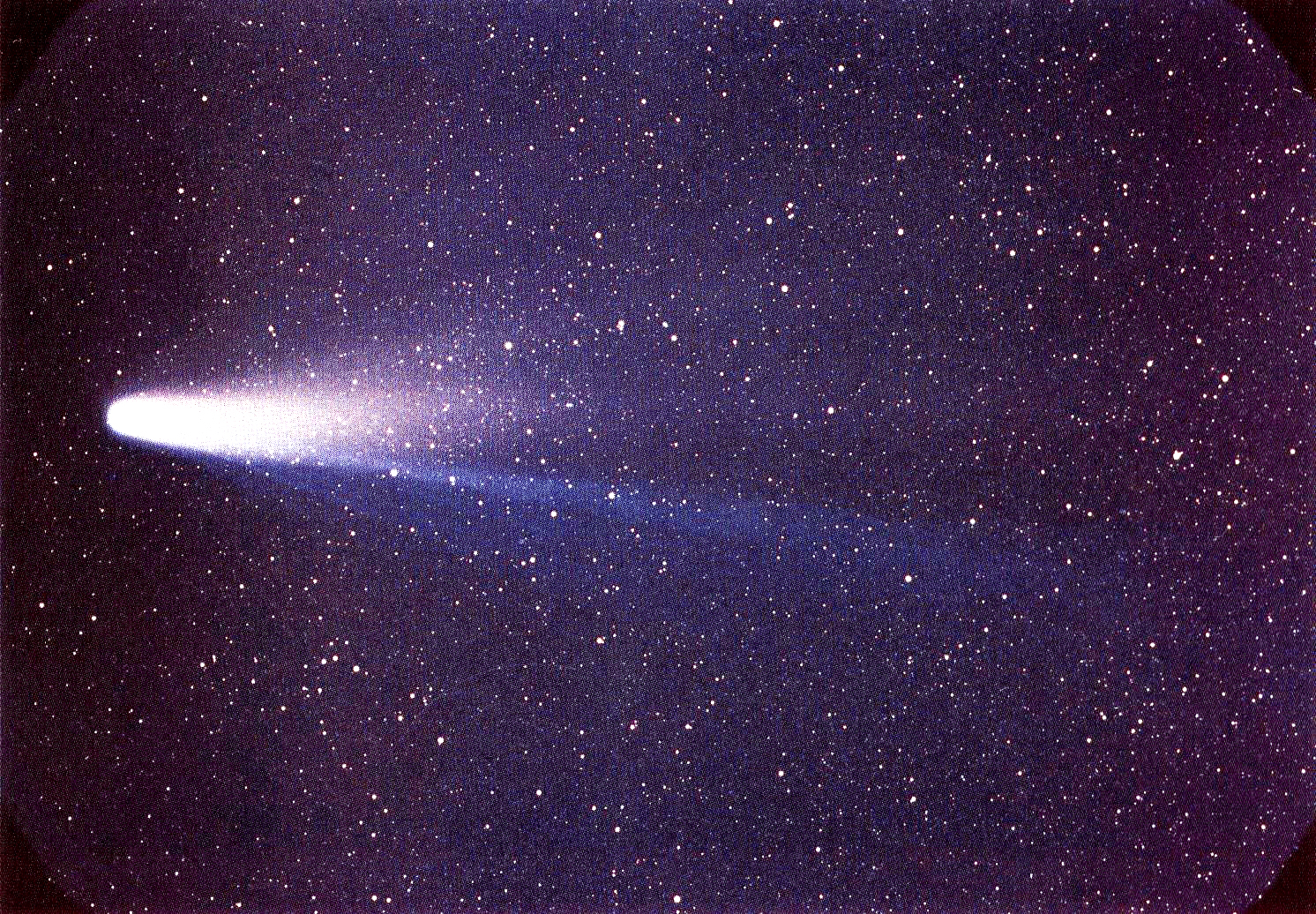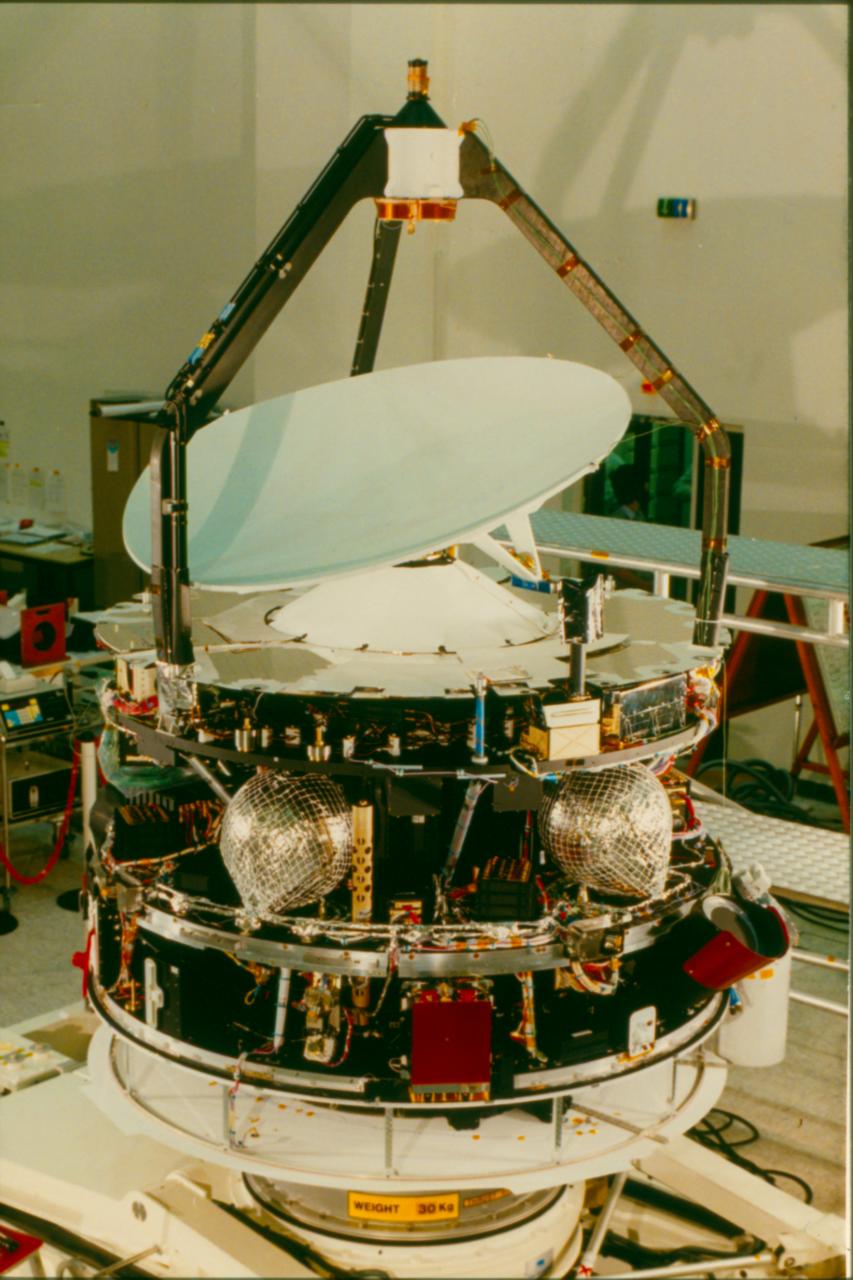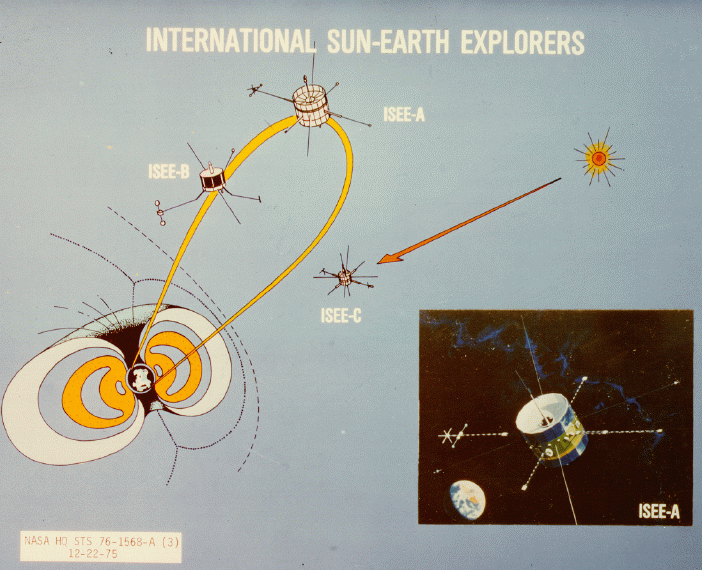|
Sakigake
, known before launch as MS-T5, was Japan's first interplanetary spacecraft, and the first deep space probe to be launched by any country other than the USA or the Soviet Union. It aimed to demonstrate the performance of the new launch vehicle, test its ability to escape from Earth gravity, and observe the interplanetary medium and magnetic field. ''Sakigake'' was also supposed to act as a frame of reference for data received from probes that flew closer to Halley's Comet. Early measurements would be used to improve the mission of the Suisei probe launched several months later. ''Sakigake'' was developed by the Institute of Space and Astronautical Science for the National Space Development Agency (both of which are now part of the Japanese Aerospace Exploration Agency, or JAXA). It became a part of the Halley Armada together with Suisei, the Soviet Vega probes, the ESA Giotto and the NASA International Cometary Explorer, to explore Halley's Comet during its 1986 sojourn th ... [...More Info...] [...Related Items...] OR: [Wikipedia] [Google] [Baidu] |
Institute Of Space And Astronautical Science
(ISAS) is a Japanese national research organization of astrophysics using rockets, astronomical satellites and interplanetary probes which played a major role in Japan's space development. Since 2003, it is a division of Japan Aerospace Exploration Agency (JAXA). History The ISAS originated as part of the Institute of Industrial Science of the University of Tokyo, where Hideo Itokawa experimented with miniature solid-fuel rockets ( Pencil Rocket and Baby Rocket) in the 1950s. This experimentation eventually led to the development of the Κ (''Kappa'') sounding rocket, which was used for observations during the International Geophysical Year (IGY). By 1960, the Κ-8 rocket had reached an altitude of 200 km. In 1964, the rocket group and the ''Institute of Aeronautics'', along with scientific ballooning team, were merged to form within the University of Tokyo. The rocket evolved into the L (''Lambda'') series, and, in 1970, L-4S-5 was launched as Japan's firs ... [...More Info...] [...Related Items...] OR: [Wikipedia] [Google] [Baidu] |
Suisei (spacecraft)
, originally known as Planet-A, was an unmanned space probe developed by the Institute of Space and Astronautical Science (now part of the Japanese Aerospace Exploration Agency, or JAXA). It constituted a part of the Halley Armada together with ''Sakigake'', the Soviet Vega probes, the ESA ''Giotto'' and the NASA International Cometary Explorer, to explore Halley's Comet during its 1986 sojourn through the inner solar system. Spacecraft ''Suisei'' was identical in construction and shape to ''Sakigake'', but carried a different payload: a CCD UV imaging system and a solar wind instrument. The main objective of the mission was to take UV images of the hydrogen corona for about 30 days before and after Comet Halley's descending crossing of the ecliptic plane. Solar wind parameters were measured for a much longer time period. The spacecraft is spin-stabilized at two different rates (5 and 0.2 rpm). Hydrazine thrusters are used for attitude and velocity control; star and sun ... [...More Info...] [...Related Items...] OR: [Wikipedia] [Google] [Baidu] |
Mu (rocket)
The Mu, also known as M, was a series of Japanese solid-fueled carrier rockets, which were launched from Uchinoura between 1966 and 2006. Originally developed by Japan's Institute of Space and Astronautical Science, Mu rockets were later operated by Japan Aerospace Exploration Agency following ISAS becoming part of it. Early Japanese carrier rockets The first Mu rocket, the Mu-1 made a single, sub-orbital, test flight, on 31 October 1966. Subsequently, a series of rockets were produced, designated Mu-3 and Mu-4. In 1969 a suborbital test launch of the Mu-3D was conducted. The first orbital launch attempt for the Mu family, using a Mu-4S, was conducted on 25 September 1970, however the fourth stage did not ignite, and the rocket failed to reach orbit. On 16 February 1971, Tansei 1 was launched by another Mu-4S rocket. Two further Mu-4S launches took place during 1971 and 1972. The Mu-4S was replaced by the Mu-3C, was launched four times between 1974 and 1979, with three success ... [...More Info...] [...Related Items...] OR: [Wikipedia] [Google] [Baidu] |
Halley Armada
The Halley Armada is the name of a series of space probes, five of which were successful, sent to examine Halley's Comet during its 1986 sojourn through the inner Solar System, connected with apparition "1P/1982 U1". The armada included one probe from the European Space Agency, two probes that were joint projects between the Soviet Union and France and two probes from the Institute of Space and Astronautical Science in Japan. Notably, NASA did not contribute a probe to the Halley Armada. Main space probes Probes involved (in order of closest approach): *Giotto (596 km), the first space probe to get close-up color images of the nucleus of a comet. (ESA) *Vega 2 (8,030 km), which dropped a balloon probe and lander on Venus before going on to Halley. (USSR/France Intercosmos) *Vega 1 (8,889 km), which dropped a balloon probe and lander on Venus before going on to Halley. (USSR/France Intercosmos) *Suisei (151,000 km), also known as PLANET-A. Data from Sakigake was used to improve ... [...More Info...] [...Related Items...] OR: [Wikipedia] [Google] [Baidu] |
Giotto (spacecraft)
''Giotto'' was a European robotic spacecraft mission from the European Space Agency. The spacecraft flew by and studied Halley's Comet and in doing so became the first spacecraft to make close up observations of a comet. On 13 March 1986, the spacecraft succeeded in approaching Halley's nucleus at a distance of 596 kilometers. It was named after the Early Italian Renaissance painter Giotto di Bondone. He had observed Halley's Comet in 1301 and was inspired to depict it as the star of Bethlehem in his painting ''Adoration of the Magi'' in the Scrovegni Chapel. Mission Originally a United States partner probe was planned that would accompany ''Giotto'', but this fell through due to budget cuts at NASA. There were plans to have observation equipment on board a Space Shuttle in low-Earth orbit around the time of ''Giotto''s fly-by, but they in turn fell through with the ''Challenger'' disaster. The plan then became a cooperative armada of five space probes including ''Giotto'', ... [...More Info...] [...Related Items...] OR: [Wikipedia] [Google] [Baidu] |
Deep Space Probe
Unmanned spacecraft or uncrewed spacecraft are spacecraft without people on board, used for robotic spaceflight. Uncrewed spacecraft may have varying levels of autonomy from human input; they may be remote controlled, remote guided or even autonomous, meaning they have a pre-programmed list of operations, which they will execute unless otherwise instructed. Many habitable spacecraft also have varying levels of robotic features. For example, the space stations Salyut 7 and Mir, and the International Space Station module Zarya, were capable of remote guided station-keeping and docking maneuvers with both resupply craft and new modules. The most common uncrewed spacecraft categories are robotic spacecraft, unmanned resupply spacecraft, space probed space observatories. Not every uncrewed spacecraft is a robotic spacecraft; for example, a reflector ball is a non-robotic uncrewed spacecraft. Examples Selected lunar probes * Luna program — USSR Lunar exploration (1959 ... [...More Info...] [...Related Items...] OR: [Wikipedia] [Google] [Baidu] |
Japanese Aerospace Exploration Agency
The is the Japanese national air and space agency. Through the merger of three previously independent organizations, JAXA was formed on 1 October 2003. JAXA is responsible for research, technology development and launch of satellites into orbit, and is involved in many more advanced missions such as asteroid exploration and possible human exploration of the Moon. Its motto is ''One JAXA'' and its corporate slogan is ''Explore to Realize'' (formerly ''Reaching for the skies, exploring space''). History On 1 October 2003, three organizations were merged to form the new JAXA: Japan's Institute of Space and Astronautical Science (ISAS), the National Aerospace Laboratory of Japan (NAL), and National Space Development Agency of Japan (NASDA). JAXA was formed as an Independent Administrative Institution administered by the Ministry of Education, Culture, Sports, Science and Technology (MEXT) and the Ministry of Internal Affairs and Communications (MIC). Before the merger, ISAS w ... [...More Info...] [...Related Items...] OR: [Wikipedia] [Google] [Baidu] |
International Cometary Explorer
The International Cometary Explorer (ICE) spacecraft (designed and launched as the International Sun-Earth Explorer-3 (ISEE-3) satellite), was launched 12 August 1978, into a heliocentric orbit. It was one of three spacecraft, along with the mother/daughter pair of ISEE-1 and ISEE-2, built for the International Sun-Earth Explorer (ISEE) program, a joint effort by NASA and ESRO/ESA to study the interaction between the Earth's magnetic field and the solar wind. ISEE-3 was the first spacecraft to be placed in a halo orbit at the Earth-Sun Lagrange point. Renamed ICE, it became the first spacecraft to visit a comet, passing through the plasma tail of comet Giacobini-Zinner within about of the nucleus on 11 September 1985. NASA suspended routine contact with ISEE-3 in 1997, and made brief status checks in 1999 and 2008. On 29 May 2014, two-way communication with the spacecraft was reestablished by the ISEE-3 Reboot Project, an unofficial group, with support from the Skycorp com ... [...More Info...] [...Related Items...] OR: [Wikipedia] [Google] [Baidu] |
Halley's Comet
Halley's Comet or Comet Halley, officially designated 1P/Halley, is a short-period comet visible from Earth every 75–79 years. Halley is the only known short-period comet that is regularly visible to the naked eye from Earth, and thus the only naked-eye comet that can appear twice in a human lifetime. Halley last appeared in the inner parts of the Solar System in 1986 and will next appear in mid-2061. Halley's periodic returns to the inner Solar System have been observed and recorded by astronomers around the world since at least 240 BC. But it was not until 1705 that the English astronomer Edmond Halley understood that these appearances were reappearances of the same comet. As a result of this discovery, the comet is named after Halley. During its 1986 visit to the inner Solar System, Halley's Comet became the first comet to be observed in detail by spacecraft, providing the first observational data on the structure of a comet nucleus and the mechanism of coma and tail f ... [...More Info...] [...Related Items...] OR: [Wikipedia] [Google] [Baidu] |
Astronomical Unit
The astronomical unit (symbol: au, or or AU) is a unit of length, roughly the distance from Earth to the Sun and approximately equal to or 8.3 light-minutes. The actual distance from Earth to the Sun varies by about 3% as Earth orbits the Sun, from a maximum (aphelion) to a minimum (perihelion) and back again once each year. The astronomical unit was originally conceived as the average of Earth's aphelion and perihelion; however, since 2012 it has been defined as exactly (see below for several conversions). The astronomical unit is used primarily for measuring distances within the Solar System or around other stars. It is also a fundamental component in the definition of another unit of astronomical length, the parsec. History of symbol usage A variety of unit symbols and abbreviations have been in use for the astronomical unit. In a 1976 resolution, the International Astronomical Union (IAU) had used the symbol ''A'' to denote a length equal to the astronomical ... [...More Info...] [...Related Items...] OR: [Wikipedia] [Google] [Baidu] |
1985 In Spaceflight
The following is an outline of 1985 in spaceflight. Launches , colspan="8", January , - , colspan="8", February , - , colspan="8", March , - , colspan="8", April , - , colspan="8", May , - , colspan="8", June , - , colspan="8", July , - , colspan="8", August , - , colspan="8", September , - , colspan="8", October , - , colspan="8", November , - Deep Space Rendezvous EVAs References Footnotes {{Orbital launches in 1985 Spaceflight by year ... [...More Info...] [...Related Items...] OR: [Wikipedia] [Google] [Baidu] |
Satellites Orbiting The Sun
A satellite or artificial satellite is an object intentionally placed into orbit in outer space. Except for passive satellites, most satellites have an electricity generation system for equipment on board, such as solar panels or radioisotope thermoelectric generators (RTGs). Most satellites also have a method of communication to ground stations, called transponders. Many satellites use a standardized bus to save cost and work, the most popular of which is small CubeSats. Similar satellites can work together as a group, forming constellations. Because of the high launch cost to space, satellites are designed to be as lightweight and robust as possible. Most communication satellites are radio relay stations in orbit and carry dozens of transponders, each with a bandwidth of tens of megahertz. Satellites are placed from the surface to orbit by launch vehicles, high enough to avoid orbital decay by the atmosphere. Satellites can then change or maintain the orbit by propuls ... [...More Info...] [...Related Items...] OR: [Wikipedia] [Google] [Baidu] |








